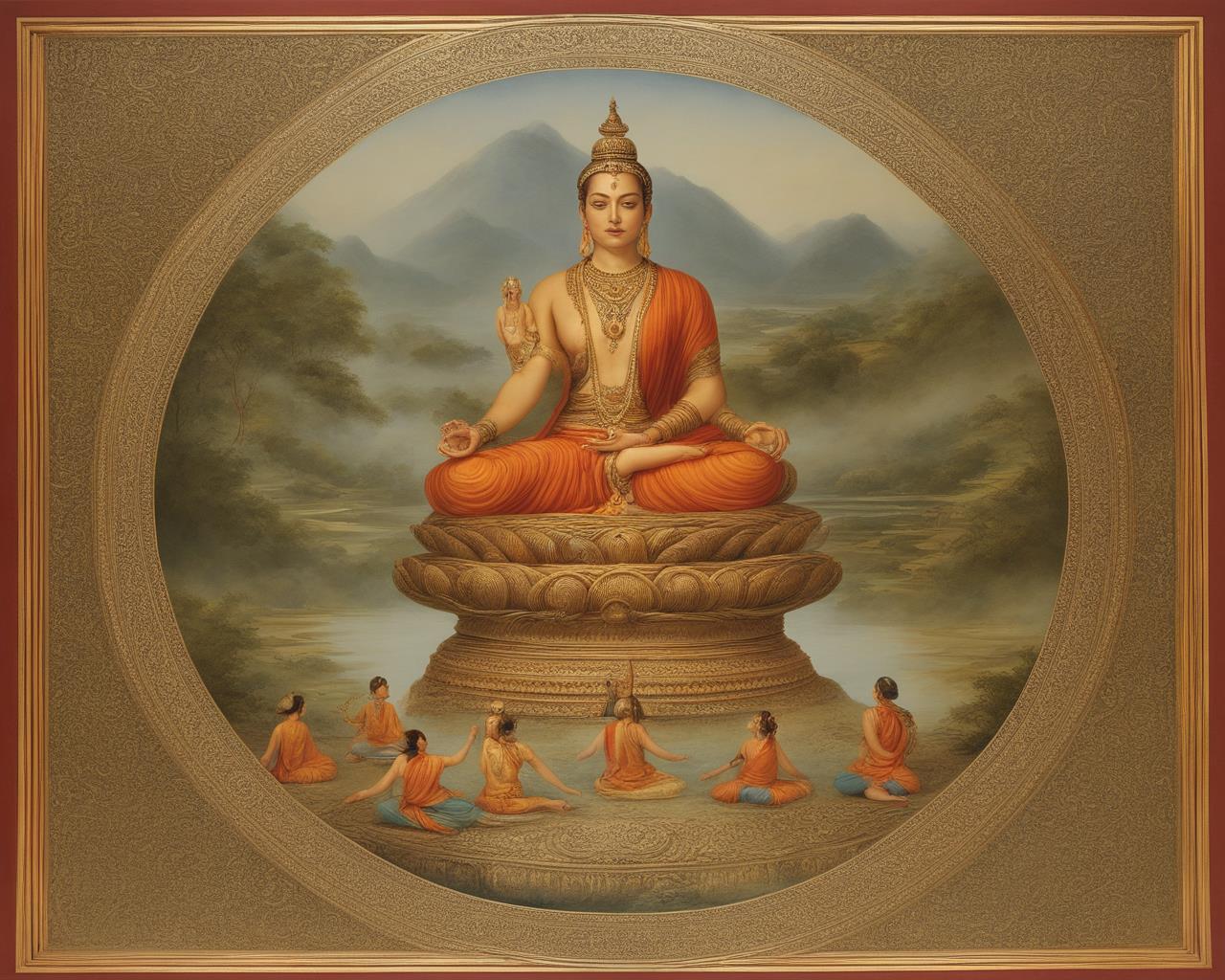Understanding Doshas: The Key to Your Ayurvedic Constitution
By Dennis Bluthardt, Namaste Studios
For centuries, India has embraced a unique health system called Ayurveda. This system of medicine dates back thousands of years and certainly well beyond the 2,500 to 3,000 years that practitioners usually cite. Returning to this ancient human practice, we can see that it has never been singular; it holds many local and transnational practices. What Ayurveda means to the person next door differs from what it has meant to me or you. Still, in whatever sense it finds appearance, Ayurveda is rooted in an ancient practice of kinds of health consultations, which lead to specific ways of understanding the human body.
Vata dosha correlates with the forces of nature that govern motion and change. These three fundamental doshas govern not only the vital functions of the human body but also a range of physiological aspects that are often relevant to the psychology of the individual. Comprised of (1) Vata, (2) Pitta, and (3) Kapha, these doshas are the very stuff of which the body (and mind) are made. Each Dosha comprises the five elements: space, Air, fire, water, and earth.
Their manifestation in our natural world and within the body determines nearly all a body’s processes, from the workings of microcellular change to the overarching systems that regulate our waking, digestion, activity, and sleep.
The five elements are organized according to relationships that form the doshas, which take on the characteristics specific to their elements. Space and Air, for example, are the elements that characterize Vata energy. Vata is responsible for movement in the body and organizing thought.
Pitta energy refers to fire and water in the body. It is linked to processes of metabolism and transformation of both thought and the more tangible digestion and absorption of nutrients.
Kapha’s primary attributes include maintaining structure (or internal protective processes like immunity and memory) and lubrication. The combination of elements helps to create mental and physical traits in an individual.
Understanding their elemental constituents allows us to begin thinking about our relationship to imbalance, which will be explained through the lenses of Vata, Pitta, and Kapha. Ayurveda can tell us how we relate to change through disturbances in these elements; physicians believe that certain discomforts in one’s function will then work to present pathology. One will comprehend how the doshas produce physiology and health in a specific sequence only when they grasp the natural workings of the human body.

Dosha Imbalance and Its Effects
The main three doshas are Vata, Pitta, and Kapha. They are the three fundamental energies in Ayurveda that describe and regulate our physical and mental health. Each category has a group of qualities or functions to perform in the body. If someone loses balance within that category of qualities, problems will arise. There are different problems associated with each Dosha. For example, Vata’s Dosha is the principle of Air and space and, as such, regulates all movement and communication. Symptoms will start to show themselves as anxiety, restlessness, insomnia, etc.
Pitta is fire and water and governs all the transformative metabolic functions in the body.
Pitta’s symptoms are irritability, anger, and inflammation. Kapha, earth, and water play the role of giving anything structure and serving as lubrication. Therefore, a Kapha will gain weight if they’re out of balance. They will become lethargic and not want to do anything. Studies show that perseveration, that is, an inability to pick themselves up to complete the next task, is becoming a widespread mental illness, and this is a problem of Kapha dosha. Evidence suggests this set is increasing due to “novel” environmental conditions.

What Are Doshas?
In the ancient Indian medical system of Ayurveda, the word ‘doshas’ describes the three foundational machinations of both physiological and, some would say, mental function. These doshas, Vata, Pitta, and Kapha are derived from the five elements (space, Air, fire, water, and earth) and manifest specific qualities or characteristics derived from these elements.
Vata is the Dosha characterized by Air (Vayu) and Space (Akasha). Vata is associated with movement within the body and the change of the gross body, be it muscular or joint movements, and creativity. It is also related to flexible thinking. People who are predominantly Vata (Vata-Prakriti) tend to be quick movers and energetic, and potentially, on the other side of the coin of balance, may have anxiety or are generally more easily ungrounded due to the application of this energy. The qualities of Vata are dry, light, calm, and rough. That of a more subtle nature, one with Vata-imbalanced physiology might experience constitutionally related pathology via various channels (digestive irregularities [constipation], late-onset joint diseases, etc.).
Pitta is the Dosha related to the interplay between the elements of Fire (Agni) and Water (Ap): Pitta controls the transformative entity of the body. It fuels the metabolism; of course, those of a Pitta nature may have a fiery countenance mentally. Pitta-Prakruti will generally be more assertive; they could even be called black-and-white in their approach to human beings, a healthy bit smug. The qualities of this Dosha are oily, sharp, and hot. If a more extreme constitution is, the body will become imbalanced, making it more difficult to control. This acidity, at the finer points of the gross human physique, makes it easier to understand the potential pitfalls of this situation.
Kapha, meanwhile, is the Dosha that represents the elements of Earth (Prithvi) and Water (Ap): it arguably represents the foundational bulwarks of the body. It allows an individual to exist in a way that genuinely represents ‘being grounded.’ Kapha represents the physique’s moisture, high-quality, hydrated, and rotund parts. The gross physiology of Kapha regulates the joints, the chemistry of the joints, and the metabolism. If your Kapha dosha is robust, your body will lean towards digestion’s heavier and slower side.
To function satisfactorily in our daily lives, we may be required to obtain a more well-balanced and higher-quality mental alertness than what we currently have. And if we are not functioning at the best mental level possible, we need to find ways to “stabilize energy” to get to the right psychogenetic place.

The Ayurvedic Constitution
In Ayurveda, the individual constitution is formed from a person’s unique combination of bodily, psychological, and emotional features, which makes up their way of “Prakriti.” In Ayurveda, an individual is defined by their Prakriti, which stays constant throughout their life.
Vata combines light, dry, and cold qualities with Air and space elements.
Pitta has the hot, sharp, liquid attributes and combines the Fire + Water elements.
Kapha combines the earth and water elements with slow, heavy, oily, and cold qualities.

Achieving Dosha Balance
Maintaining the Dosha is good for one’s health. The body is unclouded, the mind is clear, and the emotions are stable.
The combinations of two doshas comprise some configuration of the five elements (space, Air, fire, water, and earth). In Ayurveda, the main three doshas are Vata, Pitta, and Kapha, which manage what goes on in your body. When your doshas are in balance, you have good health; when they are out of balance, you get sick. We all have dosha balance: a unique ratio of these doshas based on our genetic make-up, parents, and the environment we grew up in.
Choosing foods based on the Vata, Pitta, & Kapha principles generally gives you a normal life expectancy. If you want to live a long time, what is required changes a bit? Like massages, lifestyle factors follow these doshas in the same way:
Vata is movement-based and works on the principle of stop-start; people usually walk, stand, or sit for long periods. This is destructive as it is the basics of ‘dosha’ for males; therefore, lifestyle habits/changes will differ for males compared to females!
Pitta is a short, fast-tempo exercise done in long sessions. Females will benefit more from this exercise because it’s easy and fun.
Kapha is a long-standing calming herb. Some alter the body in one way or another and usually bring balance or change favorable to the person’s mental state, restoring the body’s natural functions when imbalanced. Stainless steel, gold, and/or silver are commonly used to achieve these desired effects.
In the ancient practice of Ayurveda, an age-old system of medicine that champions balance and harmony within the body, there are three types of doshas: Vata, Pitta, and Kapha. These doshas are formed from combinations of the five elements: Air, fire, water, earth, and space. Your Dosha can be discovered by taking an online quiz or, better yet, by consulting with an Ayurvedic doctor. Discovering which Dosha or doshas are most present in your body can help you identify your strengths, tendencies, and potential weaknesses and make lifestyle adjustments.
The goal is to maintain balance in the doshas to create a state of optimal health or homeostasis in the body. Having an excess of one dosha constitution can present a variety of symptoms, some physical and some psychosomatic. For example, many people with an excess of Vata dosha may experience general (and unexplained) anxiety, heightened nervous system responses, or the need to move constantly. Those who have an overbalance or Kapha doshas may always feel tired (regardless of their body size) and gain weight quickly. As humans, we aim to strike a balance to function to the best of our abilities.
To an outsider, Ayurveda can seem like another fleeting health trend. But when integrated into one’s wellness routine, it can bring about a more profound, longer-standing state of overall health. For example, eating according to your body type, or Dosha can make a difference in how you feel and your body’s assimilation of processed foods. You can also use yoga and meditation to help balance the mind and body! These daily lifestyle modifications can change how you view your mind and body. And is there anything that sounds worse about knowing that you have control and options when it comes to your body?
Balance is key, both literally and figuratively. Health problems or potential mishaps aside, understanding what it means to have “balance” in one’s life can help put a lot of doubts aside. For some, it may be emotional instability; for others, it may be physical manifestations. For some, the two may intertwine and work against each other, creating a nasty shadow above that won’t disappear (like what I experienced). It isn’t until you take a step back and reconfigure what’s happening with your body to see where things are that you can move forward!
To learn more, visit Ayurveda at Namaste Studios to book an Ayurveda session. Additionally, you can find more of our Ayurveda Blogs here.
For a Limited Time: Get your NEW MOON JOURNAL for a massive discount at Amazon here!
Bonus for blog readers: Interested in learning how a Hybrid AI Chat Bot can save thousands of hours interacting with your clients? Click here for a FREE WEBINAR – It’s AMAZING!




